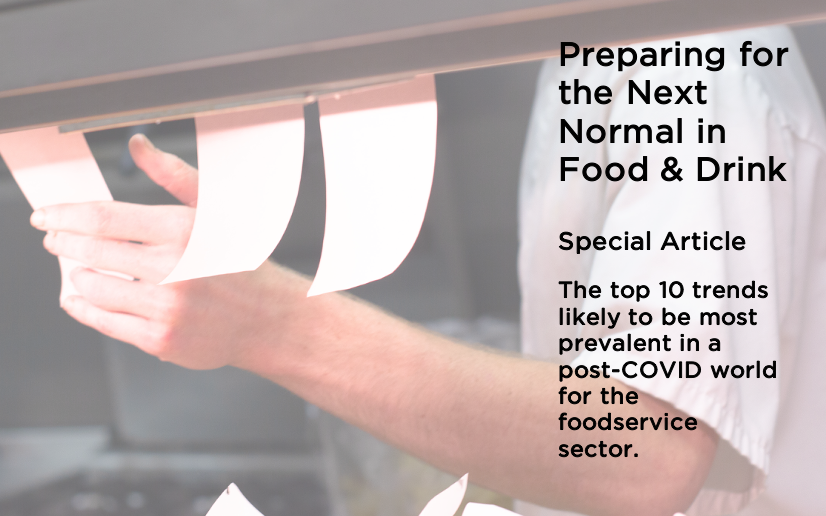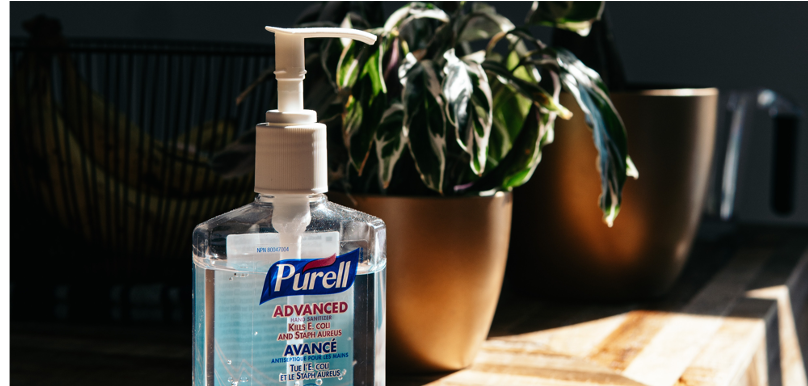 | Having a strict, well-documented and visible cleaning regime is going to be top of the list to attract anxious diners back. Not only is it imperative to show the cleanliness of the premises and staff, but also that steps are being taken to ensure guests virus free. Sanitise, for now, is the new sustainable.
Here are some initial thought starters:
- Sanitising high touch surfaces every 15 minutes
- Perhaps cutlery sanitised in full view at the table or in pre-wrapped bags
- Full body sanitiser mists or UV for guests as they enter a restaurant
- Handwashing facilities on entry
- 'Sanitise Theatre' – could we see a sommelier offering a choice of hand gels curated by local distilleries
- Bathrooms kept super clean – one in one out red/green traffic light system
- Highly trained team of in-house deep cleaners or 24-hour robotic cleaning perhaps
|
|
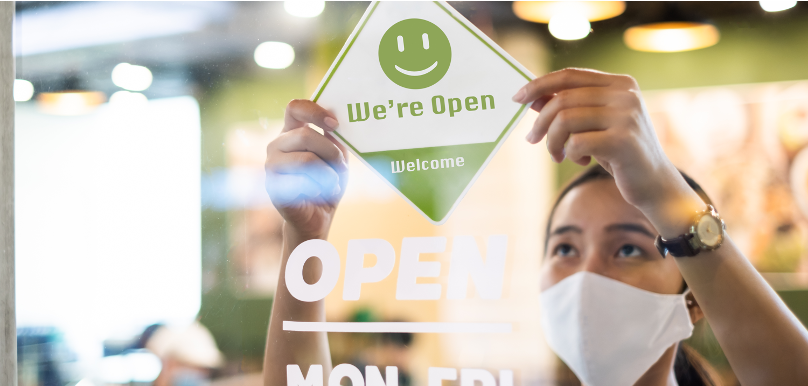 | Although the look is alien to most of us, it is one that we are going to have to get used to - highly visible PPE. Trying to protect staff and guests is imperative, as no foodservice operator wants a virus outbreak tracked and traced back to them.
Here are some initial thought starters:
- Waiting staff and chefs to wear facemasks, face shields and other PPE
- Sanitise hands between tables
- Guests to wear facemasks until eating
- Disposable bags for facemasks to be placed into when guests not eating
- Temperature checks for all guests and staff
- Contact details of all guests to be recorded, in case of tracing in the future
|
|
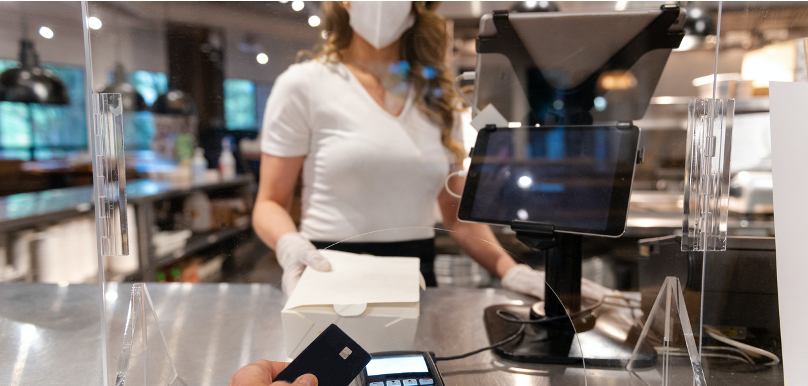 | A flow reconfiguration of the outlet is needed to ensure social distancing is enforced. Simple technology can be used to ensure a minimal touch environment such as, taking orders and payments via contactless app-based technology.
Here are some initial thought starters:
- One door in, one door out and clear routes through establishments
- Markers on the floor indicating one-way systems with clear signage and instructions
- Fewer tables and reduction in unnecessary floor decor to ensure maximum floorspace
- Menu QR codes on table, order and pay with your smartphone and Single-use menus
- Table service only, diners must remain seated
- Perspex barriers between tables
- We've also some humorous innovations from bumper tables, guest inside a giant rubber ring, Diners wearing hats with pool noodles to encourage distancing
- The end of communal tables and sharing menus?
|
|
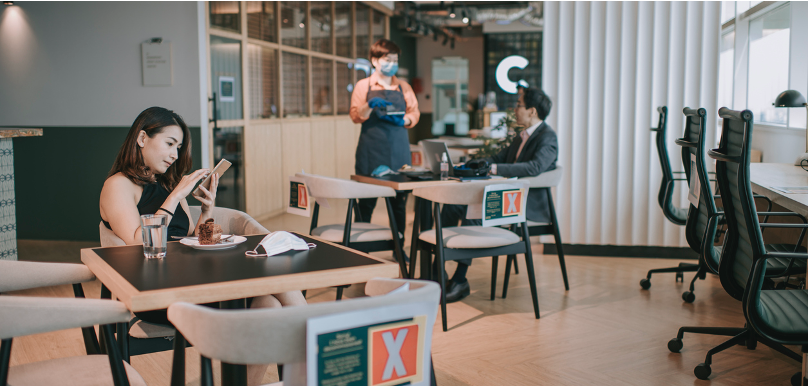 | The numbers of guests allowed in the confines of an outlet at one time will be drastically reduced, but longer opening/dining times could help overcome that. Logistics and the need to minimise waste may mean that there will be a reduction in the menu offer, but excitement could be created with daily specials and tasty limited time offers, giving it all a fresh vibe.
Here are some initial thought starters:
- Booking-only system for tables
- Reduce table sizes for smaller groups
- Reduced menu size - small plates (not sharing) could have a new relevance - aimed towards creating a more approachable, affordable, and faster experience
- Perhaps more pre-ordered items to minimise waste
- Limited time offers to create hype around signature dishes and ingredients
- Reduce food miles by supporting local farmers and producers
- Longer opening times to serve more covers
- Tech enabled capacity monitoring
- New approaches to zero waste
|
|
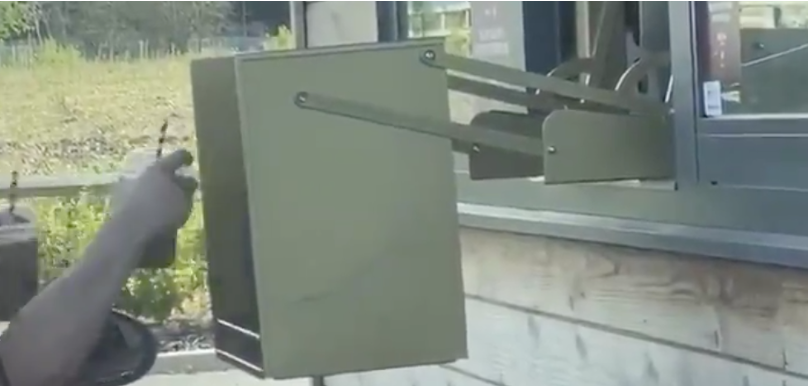 | Anxiety still being high, consumers are wanting to collect exactly what they are desiring, but with minimal human touchpoints. Creating an easy and seamless journey, giving the diner the confidence to return time and again.
Here are some initial thought starters:
- Cashless order and payment systems
- Virtual waiting lines and arrival systems
- Pick up from no-touch 'shelves' and drop-down hatches in drive thru's / streets
- Pop open the boot to collect your restaurant-style dinner
- Meals left in numbered outside heated or cooled lockers for you to collect
- Overall a shift to carry out, drive thru and delivery
|
|
 | Many foodservice businesses have had to close or pivot quickly to survive, providing their food to customers in creative ways, which seems to have born the new business model of 'at home'. The dark kitchen operating model has come into its own, not only hot finished dishes but semi-prepared 'diner to finish' food. Having access to 'the wheels' or the means to deliver into the 'diners location' will be key.
Here are some initial thought starters:- Foodservice 'at home' brands of your favourite restaurants The Savoy Grill, Woods, Hind Head, Merivail Australia
- Dinner in kit form/ part made for you to finish at home
- Branded 'provisions' – meats, sauces and condiments in particular
- Restaurant branded 'to cook' for gourmet at home events – BBQ gatherings, dinner parties, afternoon tea
- Branded packaging, serve ware, cutlery, pots and vac pack bags
- Drinks pairings to match
- Creative communication of the provenance and origin of food
- Dark kitchens preparing delivery only part prepared meals – is this a whole new channel?
|
|
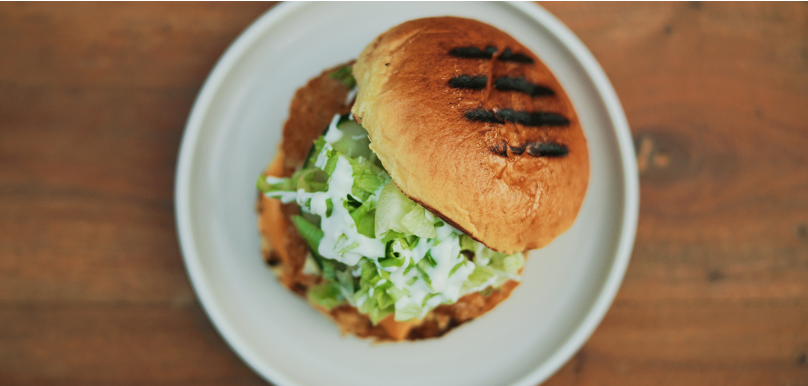 | In the 2008 financial crisis, the mantra was 'adapt to survive' and that is exactly what chefs did, changing menus away from structured 3 courses to sharing plates, all-day dining and restaurant quality street food. This crisis has different characteristics that foodservice will have to work around but the mantra is the same.
Here are some initial thought starters:
- The growth in agile hybrid space – restaurant/ deli/ to-go/ delivery in one – the restaurant-mart the opposite of the groceraunt
- Collaboration with retail for restaurant-style chilled/ frozen meals
- New channels - signature sauces and condiments online or in retail
- Shifting food offer to a higher volume one, more conducive for delivery and socially distanced consumption. Examples of this could include pizza, burger, BBQ or fried chicken, and also anything that is more difficult to do well at home
- We expect city locations vs semi urban locations to evolve, with human behaviour and work culture shifting so rapidly, there is a question as to which locations will be most desirable for brands moving forward
- Fostering local and domestic supply chains and leveraging this in communication
- Drive for efficiency - becoming more efficient with prep, execution, to-go packaging and of course manpower
- Owning your own delivery solutions. Could this herald a move away from the main delivery platforms, as restaurants start to figure out how they control their costs more tightly?
|
|
 | Restaurants have a cultural imprint on what it means to be alive. Restaurants are a place of connection, community, excitement and decadence that is very powerful. Foodservice has always been as much about the experience, from super high-end, which starts from the moment you book the table, to the friendly vibe in a pub, or the experience of a drive-thru fast meal. As new regulations come into place, ensuring you are creating a compelling experience-based journey will be key.
Here are some initial thought starters:- Diners crave connection and will want it more than ever during these times. We'll see a strong push towards more local farming and self-sufficient food systems
- Food and wine stories in the restaurant (or with home delivery) via video explaining the menu, the ingredient and the drinks to pair
- Tablescaping for restaurant dine in and 'at home'
- Curated music to pair with your takeout/ meal kit
- Scandi style, branded cushions, blankets and candles for dining in and 'at home'
- When staying in hotels expect a surge in room service - room to room offerings such as mobile hotel bars serving cocktails, drinks and nibbles
- Drive-in food entertainment combos – cinema, comedy and theatre
|
|
 | With the summer months coming (in the northern hemisphere at least) and the great outdoors calling, we are all rushing to open spaces. With risks of infection said to be lower outside, so alfresco is the new normal. Optimising space is the COVID era will be key.
Here are some initial thought starters:- Outside bars and beer gardens
- Pop-up's in car parks/ garden centres
- Pedestrianised urban centre to create increased leisure space and social distance
- Rooftop & balcony dining
- Outdoor hidden 'rooms' in hotel and restaurant gardens
- Summer greenhouses for balmy evening dining
- Micro private dining rooms for small groups
- Drive-in dining (eat in your car)
- Extending Wi-Fi so all 'new' areas of the restaurant are covered
- Capacity monitoring
|
|
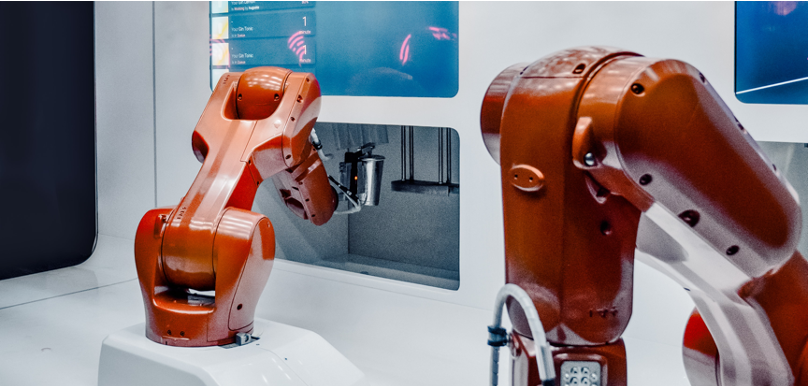 | There had been incremental application of robotic use in foodservice for years, with prototypes catching the headlines, but now with a need for human distance and contact free, the robotic world has been pushed into the very nearly here and now. From cooking and serving customers to keeping the premises immaculately clean, are we heralding in the age of the automation?
Here are some initial thought starters:
- Robotic vending machines, providing safe no-touch delivery of freshly cooked and cold foods
- Robotic bar staff, waiters and baristas
- Automated cooks and chefs
- 24-hour automated cleaning systems
- Conveyor belt style delivery systems
|
|
So, in conclusion every outlet COVID-era business model will have to be fundamentally different. This business model will have to change continually as the situation evolves, pivoting in response to this will require rethinking what it means to be a restaurant in the first place.
In this special article we've highlighted the 10 biggest shifts and manifestations that we expect to see in evidence in foodservice during the COVID-era. By considering these shifts and how you as a business, brand, start-up or entrepreneur, pivot and adapt in consideration of them, will mean that you're well positioned to succeed in the next normal in food and drink.
Join our community for the details of previous and upcoming articles in this 12-part series and all the latest food & drink trends foresight. Visit thefoodpeople.co.uk or click here and complete in the footer!
Stay safe and keep well. |
|
|
|
